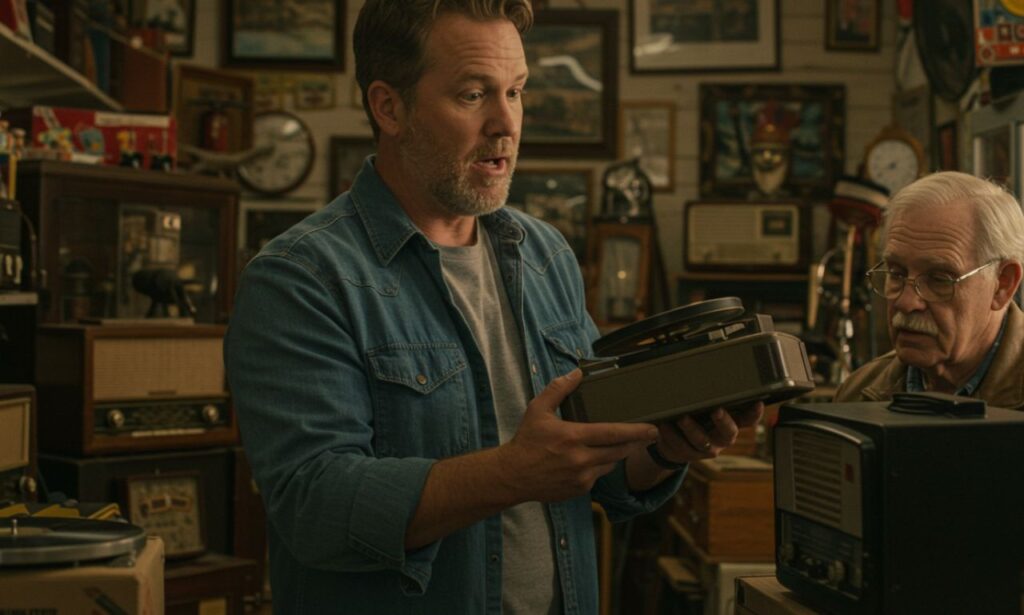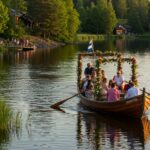Mike Wolfe, known foremost for hosting American Pickers, has quietly been steering a deeper mission beyond hunting relics: the Mike Wolfe Passion Project. This is an ongoing movement to preserve, restore, and celebrate America’s cultural and architectural heritage — particularly the forgotten places, makers, and stories in small towns.
The passion project is not just about collecting antiques; it’s about saving structures, telling stories, reviving Main Streets, and uplifting communities that are often overlooked.
Key Components of Mike Wolfe Passion Project
Here are the main pillars that define what Wolfe is building:
1. Historic Preservation & Building Revivals
Wolfe acquires old, often decrepit properties — barns, storefronts, industrial buildings — in towns across Tennessee, Iowa, and beyond. He restores these with respect for their original character: tin ceilings, old signage, woodwork, architectural details.
Through these revivals, he aims to not just save buildings, but to give communities places to gather, to use, and to reflect local identity. Examples include Columbia Motor Alley, Tennessee, and structures in LeClaire, Iowa, his home base.
2. Storytelling & Cultural Memory
Beyond the physical restorations, Wolfe’s project documents stories: the history of places, the people who built them, those who lived and worked in them. Whether through writing, photography, or guided tours, he’s committed to keeping cultural memory alive.
Through tales of small-town life, forgotten artifacs, motorcycles, signage, and Americana, he weaves a larger narrative of what everyday America once was, and what it still could be.
3. Support for Local Makers, Artisans & Small Economies
Wolfe’s passion project is not solo; it involves many hands. Local craftspeople, artisans, and makers play a central role. Restorations often feature local skill sets (woodworking, sign painting, metalwork), and revived properties may house shops, workshops, or community spaces.
This also helps small towns economically: tourism, foot traffic, pride in place. When people see their history honored, they often invest emotionally and financially in its upkeep.
4. Community Revitalization & Main Street Revival
One major goal is to breathe fresh life into downtown areas and Main Streets that have fallen into neglect. Empty buildings, abandoned storefronts, and fading signage are often part of small-town decline; Wolfe’s project aims to reverse that by restoring places that can function again — shops, cultural hubs, meeting places.
These revived spaces can create jobs, spur local pride, and even draw tourism—turning what was once derelict into destination
5. Sustainability & Honoring the Past over Replacement
Rather than tearing down and building anew, Wolfe emphasizes reuse, restoration, and retaining history. This is sustainable both in environmental terms (materials reuse etc.) and in cultural terms: keeping what’s meaningful rather than replacing with something generic.
Recent Highlights & Updates in 2025
Here are what’s new with Wolfe’s passion project this year:
-
Wolfe has intensified focus on Columbia Motor Alley, Tennessee, converting old industrial buildings into mixed-use spaces like vintage markets, studios, galleries.
-
In LeClaire, Iowa, downtown restoration continues. Some storefronts that were vacant are now functional and part of community programming.
-
He has made public commitments to heritage grants to support artisans and makers in small towns. These grants help repair, restore or build awareness for traditional crafts.
-
Wolfe has hinted at expanding his efforts via media: more storytelling platforms, possibly mini-documentaries or increased digital content focused on the restoration and preservation angle.
Why Mike Wolfe Passion Project Matters Now
In an era of rapid modernization, urban sprawl, and mass production, Wolfe’s project resonates in several ways:
-
Cultural preservation: Many small towns are losing their historical buildings and character. Wolfe’s work helps safeguard these before they vanish.
-
Heritage tourism potential: Travelers increasingly seek authentic experiences. Preserved Main Streets, vintage shops, historic architecture attract interest.
-
Community identity & pride: Restored structures give residents a sense of connection and continuity, improving morale and civic engagement.
-
Environmental sustainability: Reusing and restoring existing structures often consumes fewer resources than building new ones.
-
Supporting craftsmanship: Traditional skills are at risk of disappearing. By spotlighting and commissioning local artisans, Wolfe helps preserve skills and knowledge.
Challenges & Considerations
Even for someone with Wolfe’s fame and resources, the passion project has hurdles:
-
Regulatory & zoning issues: Historic preservation often involves navigating local laws, permits, code compliance. Renovating old structures isn’t always straightforward.
-
Cost & funding: Restorations can be expensive; maintenance over time adds up. Ensuring financial sustainability is a constant concern.
-
Balancing authenticity vs functionality: Sometimes old buildings need structural updates, modern amenities. Preserving character while making them safe and usable is a delicate balance.
-
Community buy-in: For a project in a small town to succeed, local residents, governments, businesses must support and participate. Reviving a Main Street needs more than one person.
-
Public perception & media vs reality: Audiences might expect dramatic transformations; in reality, restorations take time, setbacks, and invisible work (structural, behind-the-scenes).
How You Can Engage with Mike Wolfe Passion Project
If you’re inspired by Wolfe’s mission, there are several ways to get involved or support similar efforts:
-
Visit restored Main Streets, museums, or properties Wolfe has worked on to see the impact firsthand.
-
Support local artisans and makers in your area; buy handmade, keep stories alive.
-
Volunteer for historical societies or community revitalization projects. Even small efforts (painting, landscaping, awareness) matter.
-
Document local history: collect oral histories, photos of old buildings, signs—before they disappear.
-
Share and elevate these stories via social media; sometimes awareness is the first step.
What’s Ahead: Wolfe’s Vision for the Next Phase
Looking toward the future, Wolfe’s project seems poised to expand in several directions:
-
A campaign or goal to restore a large number of historic buildings across many U.S. states, possibly to cover all 50 states by a certain date.
-
More formalized media content around preservation: digital mini-series, books, behind-the-scenes of restoration, artisan profiles.
-
Growing “heritage networks” — partnerships with local governments, nonprofits, heritage trusts to fund, scale, and replicate successful models.
-
Technological integration: using better documentation, possibly virtual reality or archival media to preserve stories even if buildings are lost.
-
Merchandise and brand extensions that help support the restoration work financially while promoting meaningful design and craftsmanship.
Conclusion
Mike Wolfe’s Passion Project is far more than a celebrity side-gig. It is an evolving mission to reclaim America’s forgotten places, safeguard its architectural heritage, and empower local communities and artisans. Against a backdrop of rapid change, Wolfe is asking us to slow down, regard the rust, the wood-grain, the peeling paint — and to see history as something alive, capable of being restored, renewed, and relevant.
Preserving history doesn’t just preserve buildings; it preserves identity, memory, and connection. Wolfe’s work offers a roadmap for what preservation with purpose can look like: grounded in place, people, and stories. And it suggests that perhaps the most meaningful treasures are not objects alone, but the context, the home, and the community that holds them.







